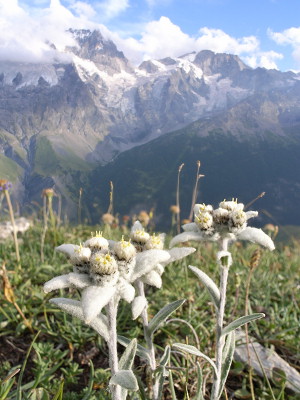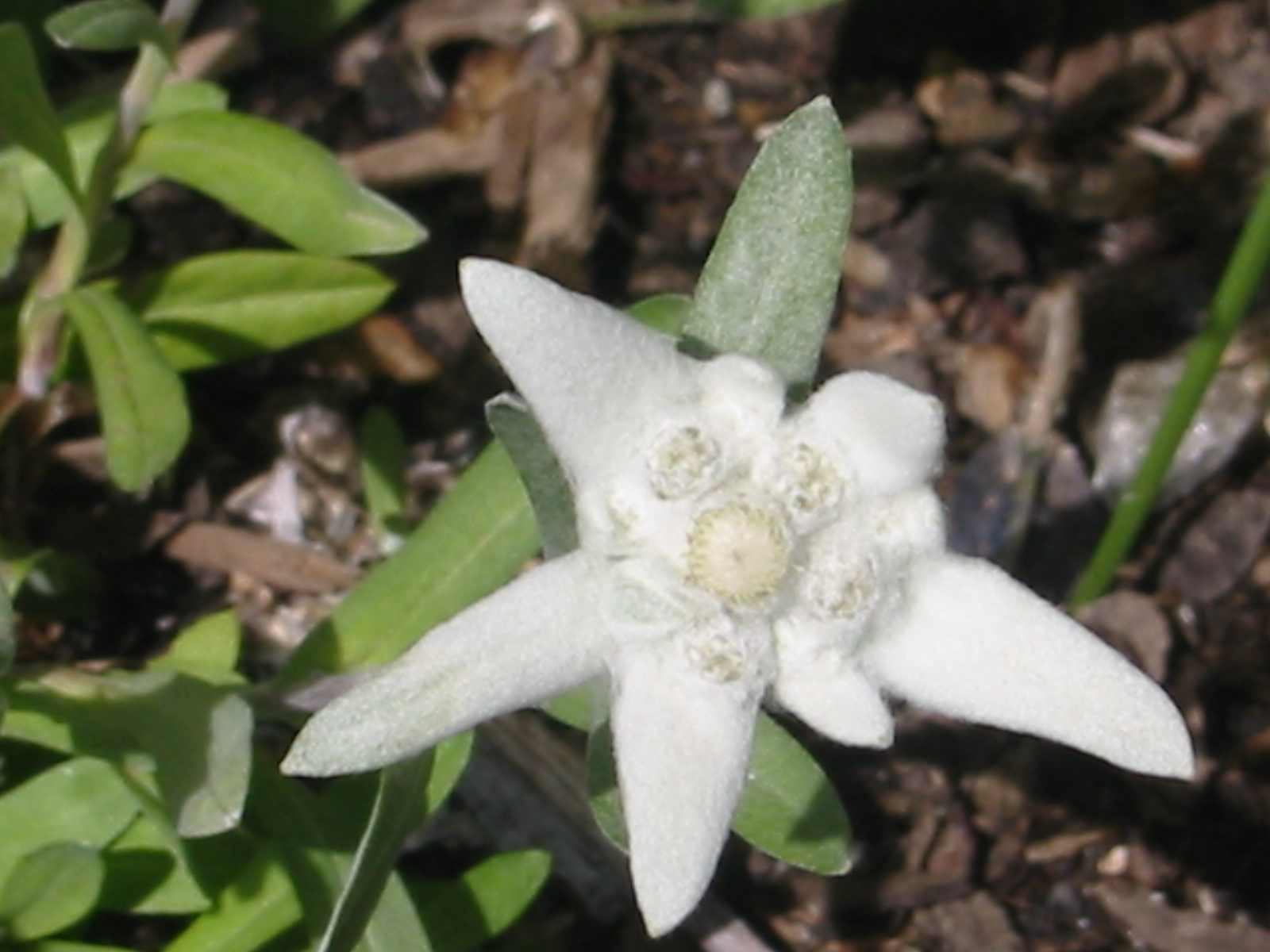Characteristics
 |
 |
 |
Edelweiss (Leontopodium alpinum) is a small, white-flowered alpine plant that is native to mountainous European locations including the Pyrenees, Alps and Carpathians. It is part of the large daisy (Compositae or Asteraceae) family. It has long been popular in Europe and acquired symbolic, historic and other meanings. In North America, alpine plant enthusiasts sometimes grow edelweiss in rock gardens or containers.
Myth Cleared Up
Edelweiss plants do not produce snowy white blossoms, as the lyrics to the song "Edelweiss" suggest; like snow flakes though, not two are alike. The showy, hair covered rosettes aren't flower petals but modified leaves, silvery white in color with a tinge of green. The actual flower centers are golden yellow from pollen dust which is only a fleeting feature.
History
Leontopodium or Lions foot, is originally a plant of the Steppe of Asia. Found there in more than 30 forms, it is well adapted to climatic extremes. Its deep fibrous roots and the felt like covering of its leaves protect it from drought, the ravages of winds and the potentially damaging sun shine.
The alpine Edelweiß, which in the German language means noble and white, is found generally at altitudes from 1700 meters to 2700 meters.
Edelweiss prefers calcareous light soils with excellent drainage and southern exposure, where it likes to form herbal mats, growing from 8 cm to 20 cm tall.
Edelweiss flowers are classified as short lived perennials, which after being picked during a number of growing seasons from the same plant, are unable to propagate by seeding and will disappear from an formerly established area.
Cultural Significance
The Edelweiss flower has since time immemorial been valued as medicine against the ailments of men and their beasts, as powerful Talisman to ward off evil and of course as the "Ultimate Love Charms" of the mountains.
Love struck young men would try to endear themselves by collecting Edelweiss from those hard to access crags and ledges in the High Alpine of Europe.
During these quests many died from falls, or succumbed to exposure, insufficiently prepared for sudden weather changes.
Dozens perished in just one season!
The danger wrought exercise of collecting such a bouquet proved in those days that the suitor was brave, able-bodied and serious in his intentions. A mixing of flowers and machismo rarely seen in western culture.
That is one of the reasons why men still decorate themselves with this bloom and wear it like a:
"Medal of Honor".
Uses For Skin Care and Symbolism
Traditionally, Edelweiss teas and infusions of the herb in hot milk sweetened with honey were used in the curing of diarrhea and dysentery. It also proved beneficial in combating ailments like tuberculosis and diphtheria.
Edelweiss-Extract is now added to some high end skincare products because Edelweiss's natural compounds have the ability to neutralize free radicals, and are preventing amplification of those super oxides involved in the aging processes of skin. Edelweiss and Goats milk soaps are becoming very common.
UV light absorbing substances in this high altitude plant, make the extracts derived from Edelweiss an ideal additive in sun blocks, also the Edelweiss plants content of bio-flavonoids, enables preparations to strengthen the walls of blood vessels which is useful in the treatment of some vascular problems.
-Symbol of the Bulgarian Tourist Union
-In Austria "Edelweiß" is also a brand of Beer
-Edelweiss Air is an international airline based out of Switzerland
-Edelweiss is the insignia of German, Polish & Austrian Alpine Troops
-The rank insignia of Swiss Generals is the Edelweiss instead of Stars